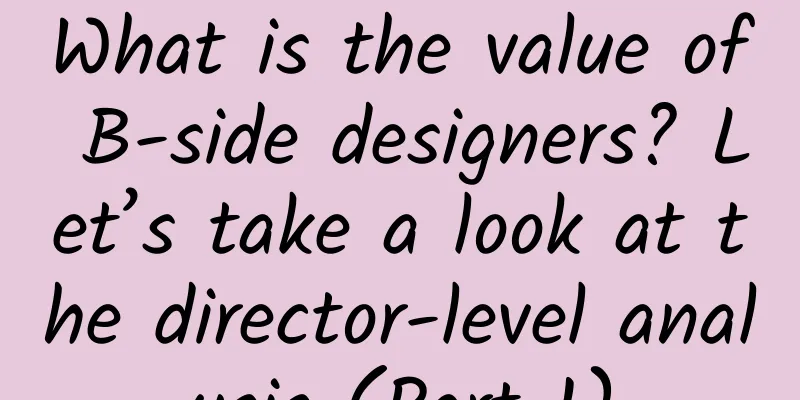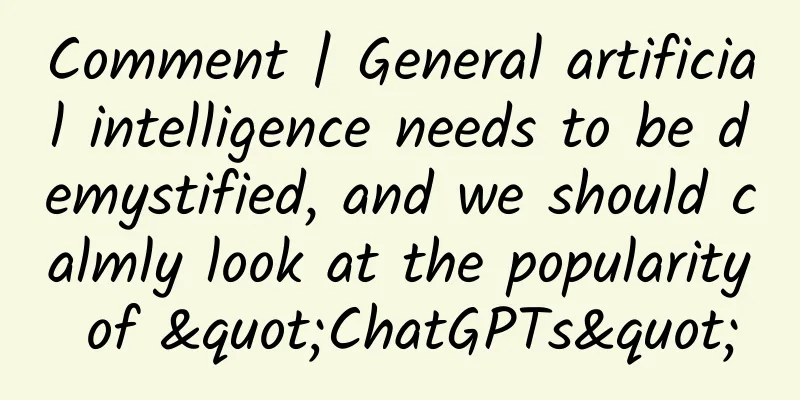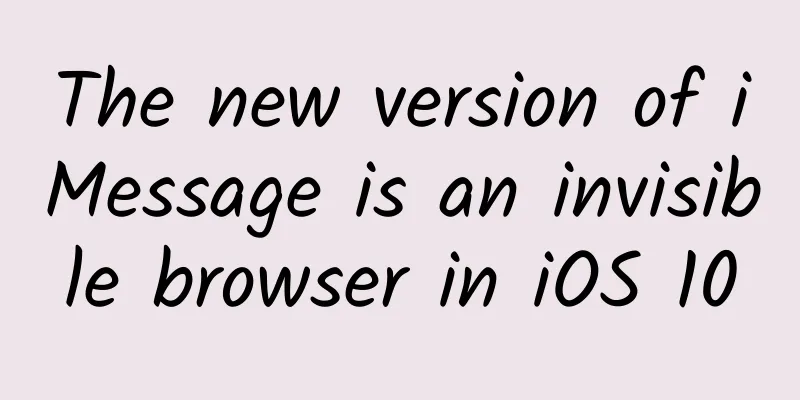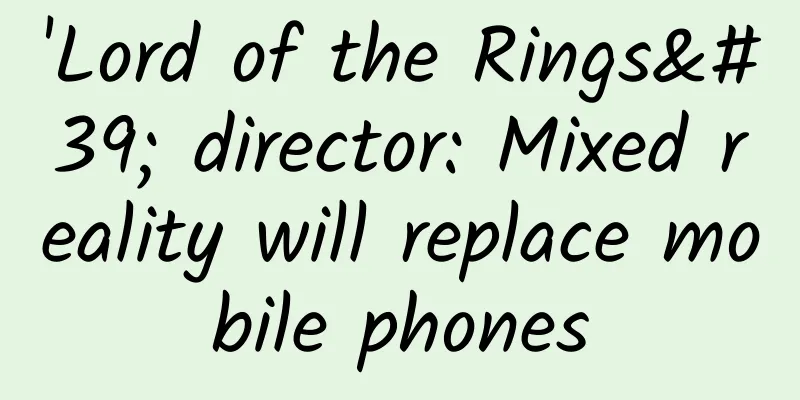What is the value of B-side designers? Let’s take a look at the director-level analysis (Part 1)

|
Where does the value of B-side designers come from today? This is a topic I've wanted to talk about for a long time. There have been a lot of inquiries and discussions recently, so I'll just elaborate on my thoughts. What is a B-side designer?Before discussing the value, let’s first make it clear that B-side designers are designers who design things. C-end design is the interface design for general users and consumers, while B-end design is the interface design for enterprises and commercial users. This is actually a very vague concept. In the conventional context, the C-end refers to mobile phone APP products, and the B-end refers to PC web management systems. This is a very imprecise statement. The design for enterprise products is not limited to PC web systems, but also includes: customized data visualization systems, computer clients, customized terminal systems, and mobile apps. The design in each field contains different specifications, requirements, and knowledge points. In particular, data visualization design, which has become popular in recent years, integrates more and more different rendering, front-end, and interactive content. It can be said to be a completely new subject. Of course, in our daily work, we generally do not cover all types. The most widely used and most demanded one is definitely the web management system, which is also the focus of our discussion today. In theory, a web management system cannot be controlled by directly typing code. We must design corresponding interfaces and interactive elements to allow users to operate through a graphical interface. Since there is a graphical interface, designers need to use their professional skills to complete, output and submit a beautiful and easy-to-use interface. A professional system interface should also include excellent detail design, design specifications, and interactive effects. So to sum up, the general understanding of the work of B-side designers is to design system interfaces for enterprises and B-side users. Professional B-side designers can provide better system specifications, design details and documentation. Oh yes, at most add appropriate interactive ideas, annotations, and cutting pictures. So, is this the end? The Dilemma of B-Side DesignersIf our work on the B-side is just to make interfaces and cut pictures, then it would be a truly happy planet. However, the development of the real world will never go according to our wishes. To sum up, there are two reasons that cause the greatest trouble to our work: the perfection of the open source system and the simple working environment. Open source systems are open and free system codes that can be directly downloaded or copied and pasted into your own projects. The role of such projects is to help programmers avoid reinventing the wheel during project development. Some basic frameworks and functions have been implemented in advance, and programmers only need to concentrate on the implementation of business functions. For example, if you rewrite a drop-down menu, you need to define functions such as default, selected, clicked, disabled, as well as the hierarchical relationship of the pop-up layer and interactive animation. Although it is not complicated, a project may contain dozens or even hundreds of operating modules of the same level. If we have to do each one from scratch, the workload will be too overwhelming. Even 007 can't handle it, and programmers won't have any more gray hairs on their heads... Therefore, using open source project code is a common, reasonable, and normal situation in B-side projects. As the demand for B-side projects continues to grow, the corresponding open source systems are becoming more and more abundant and professional. The two most commonly used B-side management system frameworks in China include AntDesign and Element Design. Others include Ke.Design from Beike, Nut.UI from JD.com, iView UI, Vant UI, etc., not to mention the corresponding frameworks abroad, led by Bootstrap and Anglar. These open source systems not only cover frameworks, codes, and components, but also include interface layout, vision, color, icons, and animations. It is understandable that compared with the uncertainty of business code, design content is relatively fixed, which allows open source projects to provide all conceivable visual content to the best of their ability. No matter what you think of or not, the system has already customized it for you, using the same specifications and materials. For example, for a revolving lantern control, Ant provides four states: up, down, left, and right. It is impossible to achieve this level in your own project. The system design component library is so complete that we can just copy and paste from the following materials to make a CVS (copy, paste and save) hero, quickly produce visual pages, get off work on time every day, live a happy life, and post photos every day... Any designer who has experienced this kind of operation in real work will quickly start to get anxious, because the work is too "simple" and there is no technical difficulty. This process does not require us to do much design, but just repeat typesetting and collage. Even a programmer can complete the same work by self-studying for a few hours. So what is the value of being a B-side designer, a skilled tool person for pasting materials? This is not just a question you would think about, but also the bosses and team members of a general company would think so. Although the demand for B-side project development is strong, the relevant professionalism of practitioners is not ideal. When B-side designers are labeled as material splicing tools, the team will naturally not be able to provide relevant respect. Coupled with the fact that the team members themselves have a half-baked understanding of project management and a superficial understanding of interaction and design, this together creates a poor B-side design living environment. For example, the product manager does not invite you to a requirements review meeting, but only gives you a stack of prototypes, and tells you not to ask anything, just use the component library to assemble them. Or the original page and interaction you worked hard on are directly replaced by the developer in the front-end layout process according to the one provided by the system, without even notifying you. Or, because the design work is "too simple" and you always feel that you have extra time, why hire a product manager? You are the real product designer. In addition to the interface work, you can also sort out product requirements (even if you don't know how to do it), or communicate with the boss/development/sales/operation to formulate product frameworks, functional services, and double the happiness. In this way, the status of B-side designers in the project is getting lower and lower. They have no say and no substantial output. So what is our value? Does this industry only need artists? ConclusionI'll leave a suspense for everyone to discuss. You can write your thoughts and experiences in the comments section. Please click for the next article: What is the value of B-side designers? Let’s take a look at the director-level analysis (Part 2) |
<<: Android multi-process communication - in-depth understanding
>>: APP development: How to choose between iOS and Android? You can do this
Recommend
“New wind” blows towards Chinese automobiles, and new forces emerge!
In ten years, China's automobile industry has...
Most will be eliminated, and the path of new forces in car manufacturing is becoming clearer
New car-making forces that were once considered d...
Alibaba Cloud Debuts at China Electric Vehicle Hundred People Forum
On March 16, at the China Electric Vehicle Hundre...
In the search for extraterrestrial life, why do scientists use Earth life as a reference?
Image caption: The ocean world beneath Europa'...
Chery executives asserted that domestic smart driving lags behind Tesla, and Musk probably covered his face in shame
A bolt from the blue, Tesla FSD is coming to Chin...
E-commerce promotion activities operation analysis
Have you ever encountered an e-commerce platform ...
WeChat has launched a new function, the internal testing of the deep cleaning function, which can clean up WeChat storage space with one click
[[429252]] With the continuous update and iterati...
Actually, we are all stars.
© CC BY 4.0 Leviathan Press: I forgot where I saw...
Android Data Binding User Guide
1. Introduction This article introduces how to us...
Google is uploading Android 10 source code to the AOSP Android open source project
September 4 news Earlier today, Google began rele...
Android smartphone outlook for 2017: Full-screen smartphones explode, Huawei and Samsung compete for first place
According to foreign media reports, there are onl...
What's so strange about hanging a person? Your hair is much stronger than an elephant's hair.
Key Points ★ Theoretically, a head of hair is eno...
Space will be very busy in 2022, and global aerospace will face these difficult tasks →
In 2022, the global space industry is expected to...
Decoding: How does Pinduoduo play with the addiction model?
Pinduoduo has a variety of promotion methods, whi...
What is the difference between Tik Tok playback volume and views?
When operating a Douyin account, many people want...









